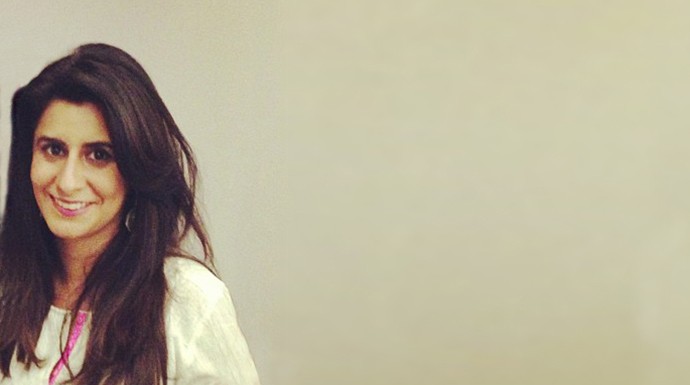It has been 18 years since I first became a journalist. Though I did not start out in fashion, it is a beat I’ve spent most of my time covering. It is more than just a job to me; it is a passion – as it should be – because most media houses even today treat fashion as a filler. However, this is probably the most important time to be reporting on fashion in India. It may have existed for decades, but it is only now that it is on it’s way to becoming an organized industry. The apex body of the industry, the Fashion Design Council of India (FDCI), was set up only 15 years ago, while ELLE, the first international magazine to launch in India, will celebrate its 17th anniversary this December.
The media plays a vital role in helping industries it covers to grow, but the first responsibility of any journalist is to his or her audience. Without the reader, you are nothing. As a fashion journalist, this puts you in a difficult predicament, as sometimes there may be subjects and trends that you feel need to be brought to the readers of attention, but which may not be something a reader feels is important. As with anything it is all about having balance in your approach. It is something you realize only after spending a few years in the business: put the reader first, and think about the “take-home value” of your piece. Fashion needs to be treated as beat I started my career as a “back of the book” journalist at Business India in 1995.
Though I had studied International Journalism at City University in London and had aspirations to become a political writer when I first moved to India, I soon realised that my internship at the House of Lords of the UK Parliament had ill prepared me for the intricacies of Indian politics. I promptly moved to the lifestyle section. I remember being fondly labelled “the Bimbo of Business India”, as that is how senior journalists viewed lifestyle reporting. Most contributors to the section were interns, as lifestyle was not viewed as an important topic of coverage. Yet, it was the one section everyone read.
I remember being fondly labelled “the Bimbo of Business India”, as that is how senior journalists viewed lifestyle reporting. Most contributors to the section were interns, as lifestyle was not viewed as an important topic of coverage. Yet, it was the one section everyone read.
The advent of Bombay Times around the same time changed lifestyle journalism as we knew it. Everything revolved around Page 3, and fashion was one of the casualties. Fashion show reportage equaled who attended the shows. Admittedly, I was also guilty of this practice. At my next job at The Indian Express, I wrote an anonymous column called “Roving Eye”, which was only about people who attended various fashionable events, parties and shows. Born and bred in London, I was enamoured by all the handicrafts, textile and embroideries I saw around me and wanted to know more. My then editor was Nonita Kalra (who later went on to become the editor-in-chief of ELLE), and she encouraged me to start a regular fashion column. I soon made fashion my “beat”. I was lucky.
How many journalists at newspapers, news magazines and weekend supplements cover fashion and only fashion? One doesn’t expect anyone but a political journalist to cover the elections, so why is it assumed that anyone can cover Fashion Week? Fashion needs to be treated as a bonafide beat by editors and writers who cover it.
One doesn’t expect anyone but a political journalist to cover the elections, so why is it assumed that anyone can cover Fashion Week? Fashion needs to be treated as a bonafide beat by editors and writers who cover it.
Fashion should be treated as a business If I recount people whose work I respect in the sphere of fashion, I can count the names on my fingers. There is of course Nonita, who I had the privilege of working under three different times at Business India, Indian Express and later ELLE. Then there is Priya Tanna, who I have written for both when she was editor of Femina Girl and most recently at Vogue, and Shefalee Vasudev at Mint. What is interesting is that none of them started their careers in fashion: Nonita was a business journalist for several years, Priya started out as a city reporter and Shefalee wrote primarily on gender issues prior to becoming the launch editor of Marie Claire India. All three of them see fashion as more than just “dressing” and it reflects in their work. The fashion business today is estimated by ASSOCHAM (The Association of Chambers and Commerce in India) to be growing at 40 percent a year and by 2020 to be worth at least Rs11,000 crores, yet how many “business of fashion” stories do you read in publications? Of course fashion is about glamour but it is a business that also happens to be glamorous.
An entertainment journalist will always talk about a film’s budget and box office earnings. Stories on films will always include quotes from seasoned trade analysts. Why should fashion be treated differently? I think the problem with most fashion journalists who have only ever covered fashion is that do not understand how to cover a “beat”. Even if you are doing a celebrity dressing story (which is unavoidable if you’re a fashion writer), look at how you are treating the story. Understand what that look says, and most importantly, do some research. Quote the right people, not just anyone on the periphery of fashion. Never forget that one of the most important rules of fashion is that it carries a message. It is your job as a journalist to contextualize that message.
Fashion is an industry you can help grow This a time where the fashion industry needs nurturing. I am hopeful that newspapers will soon employ seasoned fashion editors, that fashion magazines will grow into having circulation numbers that matter, and that there will be fashion bloggers whose opinions matter. It really is up to us. For fashion to be seen as serious, we need to treat it as more than just an accessory in the mainstream press. Magazine editors need to balance the power of the advertiser over their own credibility, and bloggers have to be less self-indulgent.
I am hopeful that newspapers will soon employ seasoned fashion editors, that fashion magazines will grow into having circulation numbers that matter, and that there will be fashion bloggers whose opinions matter.
Know your fashion, and both editors and the industry will take you seriously. This was something I realized only after I joined ELLE full-time. I had been a fashion columnist for several years, but did not know how to hem a skirt. What right do you have to give an opinion on something you do not truly understand? So I went to New York’s Fashion Institute of Technology and studied at their school of continuing and professional studies, but I know other journalists who’ve spent time working under designers, or even self-educated themselves in fashion. If you are attending a fashion week, do your research. A journalist who only writes about how late a show is running or who was sitting on the front row will never gain respect. You need to be able to analyze what is going on, and that only comes with a real knowledge on your subject. Do art writers only write about who was at a show, how bad the wine and cheese was or which Bollywood celebrity was a patron of the artist? They may be a part of the larger story, but it is never its soul. Today, Indian art is taken seriously not only because of the body of work that our artists are producing but also because of the way that art is perceived. That has a lot to do with the way art writers project the industry. The fashion media often does itself a disservice by thinking that the only way to give value to a piece is to play up the celebrity quotient or to rip a collection to pieces. You can do both if it is necessary, if it has a perspective. Fashion’s social, cultural and economic significance is far more that just “dressing”.
During the years I was editor at Harper’s Bazaar, there was one thing I could never come to terms with: the sponsored cover, a common practice at fashion magazines. A brand pays for the shoot – often at a glamorous foreign location, which creative teams tend to enjoy – and in return the magazine delivers a Bollywood star in its collection on the cover.
However, the one thing art writers do not need to worry about is advertisers. During the years I was editor at Harper’s Bazaar, there was one thing I could never come to terms with: the sponsored cover, a common practice at fashion magazines. A brand pays for the shoot – often at a glamorous foreign location, which creative teams tend to enjoy – and in return the magazine delivers a Bollywood star in its collection on the cover. It made me cringe, but considering that there are so few fashion advertisers and that magazine budgets are limited, it was an increasingly frequent reality.
One tried to avoid it in important fashion months like March and September and mixed international brands with Indian designer looks so that there weren’t any head-to-toe looks. But it was a reality I found hard to deal with, and was one of the reasons I decided it was time to move on. Newspapers may have Medianet and sponsored features, but at least they do not try and hide it! This brings me back to the most important role of any journalist is to respect your reader. This is the absolute covenance of any journalist irrespective of what they write about.
_________________
Sujata Assomull is a Fashion columnist & Brand Consultant and the former Editor of Harper’s Bazaar India.





Brilliant. Frank and honest. Really loved reading it. Learnt a lot, refreshed attitude towards what I write, and smiled.
Honest and straightforward. Kudos to you!